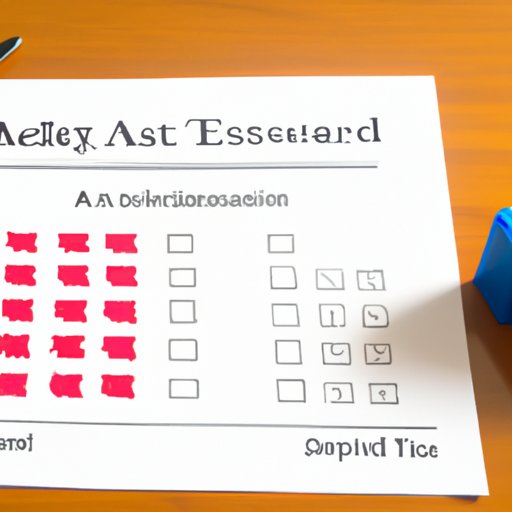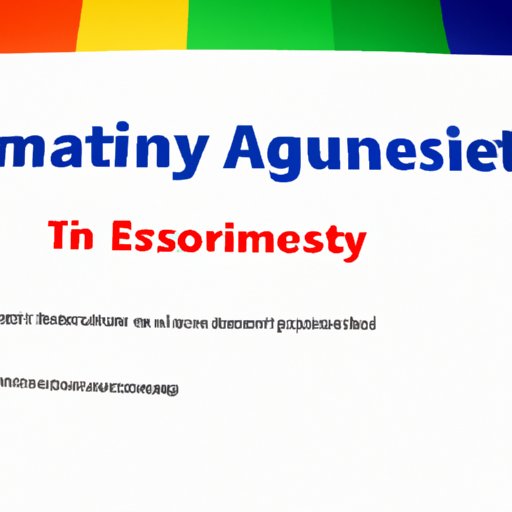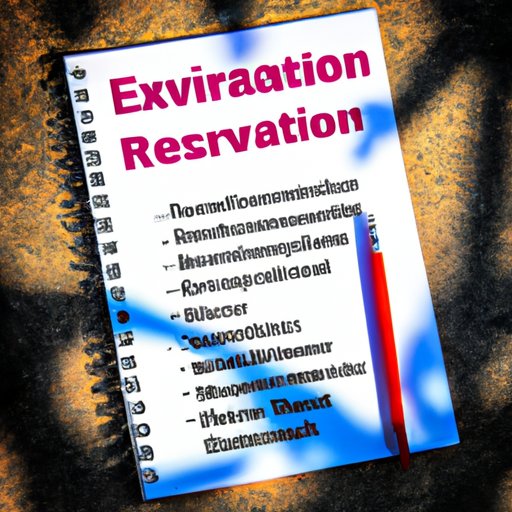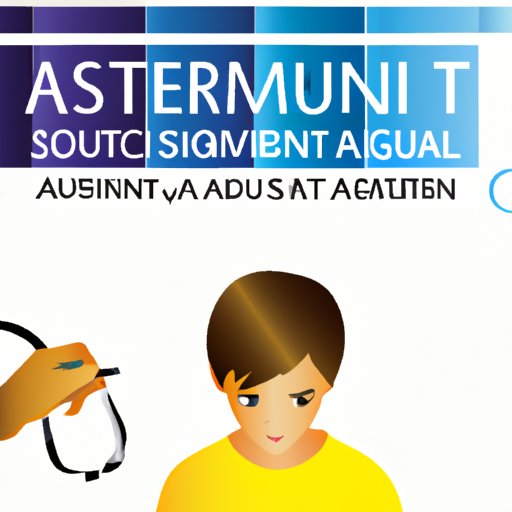Introduction
Autism is a complex neurological disorder that affects an individual’s ability to communicate and interact with others. While there is no “cure” for autism, early diagnosis can help individuals with autism lead more fulfilling lives by providing access to treatments and interventions that may improve their quality of life. However, diagnosing autism can be a complicated process. This article will provide an overview of the steps necessary for a comprehensive autism diagnosis.
Visit a Medical Professional
The first step in diagnosing autism is to visit a medical professional. It is important to establish care with a doctor who is knowledgeable about autism and its associated symptoms. Your doctor may refer you to a specialist or a multidisciplinary team of professionals who are experienced in diagnosing and treating autism. During this initial appointment, your doctor should discuss different treatment options available for individuals with autism.

Complete an Autism Screening Test
Your doctor may administer an autism screening test such as the M-CHAT or the Autism Spectrum Screening Questionnaire (ASSQ). These tests can help identify potential signs of autism in children as young as 18 months. It is important to prepare for these tests by being aware of any behaviors or developmental delays that may be indicative of autism.
Results from these tests can help determine whether further assessment is necessary. However, it is important to note that these tests are not always reliable and should not be used as a definitive diagnosis of autism.
Take Part in Diagnostic Interviews
If your doctor suspects that you or your child may have autism, they may recommend taking part in diagnostic interviews. During these interviews, trained professionals will ask questions about behavior, communication, social skills, and other areas related to autism. It is important to prepare for these interviews by gathering information about your or your child’s development and any behavioral issues that may be present.
The results of these interviews can help determine whether further assessment is necessary. After the interview, your doctor may recommend additional treatments or interventions.

Undergo Cognitive and Behavioral Assessments
If your doctor suspects that you or your child has autism, they may recommend undergoing cognitive and behavioral assessments. These assessments can help determine the presence and severity of autism symptoms. During these assessments, your doctor may evaluate your or your child’s verbal and nonverbal communication, social interaction, and behavior.
Your doctor may also use various tools, such as IQ tests, to assess cognitive functioning. Results from these assessments can help doctors formulate an appropriate treatment plan.
Receive Genetic Testing
In some cases, doctors may recommend genetic testing to help diagnose autism. This type of testing can help identify genetic mutations that may be linked to autism. It is important to discuss the risks and benefits of genetic testing with your doctor before deciding if it is right for you or your child.
There are several types of genetic tests available, such as chromosomal microarray analysis, chromosomal karyotyping, and whole exome sequencing. It is important to understand the results of these tests and discuss them with your doctor.
Provide Documentation of Symptoms
It is important to provide your doctor with documentation of any symptoms that may be indicative of autism. This can include reports from teachers, therapists, and other professionals who have observed the individual. It is also important to document any behaviors or developmental delays that may be present.
Your doctor may also ask for medical records, such as birth records or immunization records, to help determine if there is a history of autism in the family.

Obtain a Comprehensive Evaluation Report
Once all of the necessary tests and assessments have been completed, your doctor will provide you with a comprehensive evaluation report. This report should include an overview of the individual’s current functioning, a list of any diagnoses or conditions, and recommendations for treatment and intervention. It is important to understand the components of the report and explain the findings to other professionals who may be involved in the individual’s care.
Conclusion
Diagnosing autism can be a complicated process. It is important to work with a doctor who is knowledgeable about autism and its associated symptoms. It is also important to understand the steps necessary for a comprehensive autism diagnosis, including visiting a medical professional, completing an autism screening test, taking part in diagnostic interviews, undergoing cognitive and behavioral assessments, receiving genetic testing, providing documentation of symptoms, and obtaining a comprehensive evaluation report.
(Note: Is this article not meeting your expectations? Do you have knowledge or insights to share? Unlock new opportunities and expand your reach by joining our authors team. Click Registration to join us and share your expertise with our readers.)
